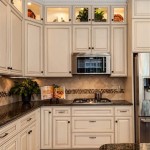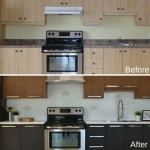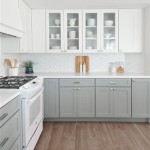Whitewashed Kitchen Cabinet Doors: A Guide to Essential Considerations
Whitewashed kitchen cabinet doors have become increasingly popular in recent years, bringing a touch of rustic charm and coastal flair to kitchens of all styles. However, achieving the perfect whitewashed finish requires careful attention to technique and material selection. This guide will cover the essential aspects of whitewashing kitchen cabinet doors, empowering you to create a stunning and durable result that enhances the beauty of your kitchen.
Material Selection
The choice of cabinet wood is crucial for successful whitewashing. Softwoods like pine are ideal due to their porous nature, which allows the whitewash to penetrate and create an even finish. Avoid using hardwoods, as they are denser and may resist the whitewash.
Surface Preparation
Prior to whitewashing, the cabinet doors must be thoroughly cleaned and sanded. Remove all dirt, grease, and any existing finishes. Sanding should be done with a medium-grit sandpaper, ensuring a smooth and even surface. Wipe away sanding dust before proceeding.
Whitewash Formulation
Whitewash is a combination of water and white paint. For a classic whitewashed look, use pure white paint. For a more distressed or aged finish, add a touch of gray or beige paint to the white. The ideal whitewash consistency should resemble thin milk or buttermilk.
Application Technique
Using a soft brush or sponge, apply the whitewash to the cabinet doors in thin, even strokes. Work in the direction of the wood grain to avoid streaking. Apply multiple coats, allowing each coat to dry thoroughly before applying the next. For a more pronounced whitewashed effect, build up the layers gradually.
Distressing (Optional)
If desired, distress the cabinet doors to create an aged or vintage look. Once the whitewash has fully dried, use sandpaper or a sanding sponge to gently sand the edges and corners of the doors, exposing the underlying wood. Focus on areas where wear and tear would naturally occur.
Sealing and Protection
To protect the whitewashed finish and enhance its durability, apply a clear sealant or varnish. Choose a sealant that is compatible with the type of paint used for whitewashing. Allow the sealant to dry completely before using the cabinets.
Pros and Cons of Whitewashed Kitchen Cabinet Doors
Pros:- Rustic and charming
- Versatile and complement various kitchen styles
- Easy to customize
- Affordable compared to other refinishing methods
- Requires careful material selection and preparation
- Multiple coats may be necessary to achieve desired look
- May require occasional touch-ups or resealing over time
- Not suitable for kitchens with high moisture levels

50 Best Kitchen Ideas For A Beautiful Space That Looks As Good It Cooks Whitewash Cabinets Chic Grey

Whitewashed Kitchen Cabinets Finishes Ashley Spencer

Whitewashed Kitchen Cabinets Finishes Ashley Spencer

Whitewashed Kitchen Cabinets Finishes Ashley Spencer

Pictures Of Kitchens Traditional Whitewashed Cabinets Kitchen Wood Tile

Whitewashed Cabinet Makeover Confessions Of A Serial Do It Yourselfer

Traditional Whitewash Kitchen Cabinets Finish Design

Whitewashed Cabinet Makeover Confessions Of A Serial Do It Yourselfer

25 Best Collection Whitewash Oak Cabinets Home Decor And Garden Ideas Stained Kitchen Wooden

43 New And Spacious Light Wood Custom Kitchen Designs Antique White Cabinets Distressed
Related Posts








